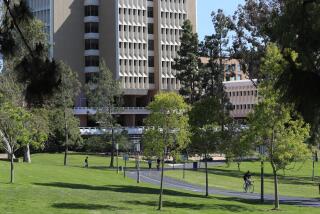America’s Kafkaesque ‘no-fly list’

- Share via
In the aftermath of 9/11, the United States adopted sweeping laws and regulations aimed at reducing the likelihood of a repeat tragedy. That was not only the government’s right but its responsibility. Yet many of the measures unjustifiably eroded basic civil liberties, as the country was reminded by a recent federal district court decision in Oregon involving the government’s controversial “no-fly list.”
The case, filed on behalf of 13 plaintiffs by the American Civil Liberties Union, seeks a more reasonable balance between security and individual rights in determining who may or may not be allowed on an airplane. It makes sense, of course, to bar those who might pose a terrorist threat. But the government’s list reportedly includes a stunning 20,000 people, 500 of them American citizens, based on secret intelligence that the government says raised “reasonable suspicion” that each one “is known or suspected to be, or has been engaged in conduct constituting, in preparation for, or in aid of or related to, terrorism or terrorist activities.”
This is where the Kafkaesque absurdities mount. If you’ve made the list, you don’t know it until you’re barred from boarding a flight for which you have a ticket. You receive no official explanation for why you’ve been barred. If you suspect that you were bumped because you’re on the list, you can ask the Department of Homeland Security’s Traveler Redress Inquiry Program to remove you. The government eventually replies that it has completed its review, but it doesn’t say whether you were, or still are, on the list; you find out the next time you try to fly. You can appeal to the courts, but because you don’t know why — or whether — you are on the list, your appeal is made blindly. A judge privately reviews your case and the government’s (secret) response before ruling on whether you must be removed from the list.
While there are obviously no official data on the subject, there are numerous anecdotes suggesting, as one might suspect, that not all 20,000 people on the list are dangerous terrorists. The problem of “false positives,” in which a person is barred from flying because his or her name is the same as another on the list, seems significant. Compounding the problem is a lack of government diligence in fixing errors. Rahinah Ibrahim, a Malaysian doctoral student, was stopped at a gate and eventually lost her student visa after she was listed erroneously. Two years later the government determined she was not a risk, yet she wound up back on the list anyway.
This is wrong. Clandestine lists and secret evidence conflict with the workings of a free society and deny people the right to due process. The government should accept the court’s decision and, instead of appealing it, fix the problem by giving people a clear explanation for why their names are on the list, and a transparent, constitutional process for removal when errors have been made.
More to Read
Sign up for Essential California
The most important California stories and recommendations in your inbox every morning.
You may occasionally receive promotional content from the Los Angeles Times.












